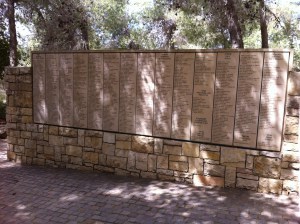Suzanne Hoffman's Blog, page 6
October 4, 2015
Piemonte Labor of Love
My Piemonte labor of love is progressing beautifully.
In seven months – God willing – I will introduce you to the women with whom I’ve spent so much of the last 30 months. Many of them are delightful ghosts who have been with me day and night as I labored to learn more about them, their families and the times in which they lived.
You will meet strong, brilliant women like Luigia Oddero, her daughter-in-law Maria and granddaughter-in-law Carla, all of whom played crucial roles in the success of their family’s winery in Santa Maria La Morra. I doubt, however, you would find their names in wine publications, something that saddens Luigia’s great-great-granddaughter Isabella Boffa Oddero. She knows how significant those women were to the patrimony of the Giacomo Oddero family.
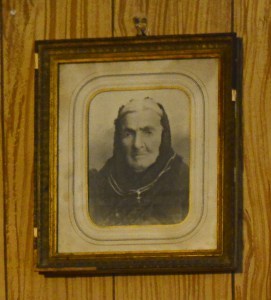
Luigia Oddero, nonna of Giacomo Oddero of Poderi e Cantina Oddero in S. Maria La Morra.
After you read “Labor of Love,” I know you’ll be inspired to visit Monchiero Carbone in Canale in Roero. As you sit in the tasting room sipping their luscious wines, you’ll notice on the wall the black and white photo of Clotilde Valente Raimondo, known as Tilde, the woman who created the legacy of the wine you will enjoy there possible. The black, kind eyes of the petite woman will enchant you. You’ll want to ask about her daughter Francesca (Cesca). If you meet Cesca’s great-granddaughter Lucia Monchiero, you’ll be meeting the future of the winery.
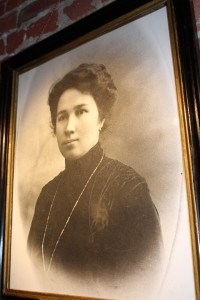
Clotilde Valente Raimondo, grandmother of Marco Monchiero of Monchiero-Carbone.
In Barbaresco, you’ll discover a woman you may of heard of before – Clotilde Rey – because her name and that of her great-granddaughter Gaia were merged to create the brand name of the legendary winery’s Langhe Chardonnay – Gaia & Rey. But did you know about her crucial roll in her father-in-law Giovanni Gaja’s legacy? Clotilde died long before I set foot in Piemonte, but I can’t help but believe that to meet Gaia Gaja is to meet Clotilde Rey such is her great-granddaughter’s brilliance and drive.
On the ridge in Tre Stelle in Barbaresco you’ll find Giovanna Rizzolio of Cascina delle Rose. There’s a strong, formidable woman in her family whose story is known to so few, but whose life touched so many, particularly during the dark, brutal days of the German Occupation between September 1943 and May 1945. You can find the name of Beatrice Rizzolio inscribed on the wall of the Righteous Among the Nations at Yad Vashem in Jerusalem.

Beatrice Rizzolio, Righteous Among the Nations and nonna of Giovanna Rizzolio of Cascina delle Rose.
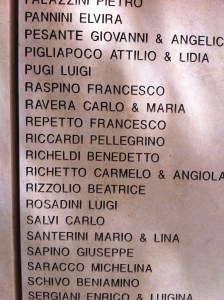
Wall with inscription of Beatrice Rizzolio at the Garden of the Righteous Among the Nations at Yad Vashem in Jerusalem.
These are but a few of the women from the 23 different families that you’ll meet if you follow me on my labor of love. Sadly, these grandmothers across the generations are no longer here for me to interview, but their families have brought them alive for me and by extension for you. What a delight and an honor it has been to get to know them and have the opportunity to be their storyteller.
“Labor of Love: Wine Family Women of Piemonte” anticipated release date is June 2016.
The post Piemonte Labor of Love appeared first on Wine Families of the World.
September 8, 2015
This day in history – September 8, 1943
On this day in history, 72 years ago, Italy signed an armistice with the Allied Forces. The date is known as “The Catastrophe.” Sadly, it did not mean the end to hostilities for the Italian people. Quite the contrary. It brought the war home to Italy and marked the beginning of a brutal occupation by the Nazis and their fascist allies as Italy descended into civil war.
Jewish Deportation
Piemonte was not immune to the terror. Across the country, brave civilians, clergy, government officials and even police and soldiers defied orders to turn over Jews for deportation to the death camps where the Final Solution awaited them.

In a somber moment, a descendent of Holocaust victims, Dan Hoffman, at the Memorial to the Deportees in Borgo San Dalmazzo.
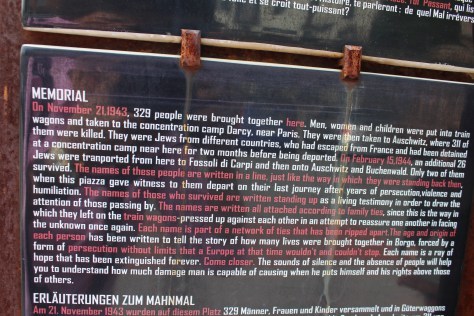
Plaque at the Memorial to the Deportees in Borgo San Dalmazzo with the story of the deportation. (Note: there is an error on the plaque. Jews were sent to “Drancy” on their way to Auschwitz, not “Dancy.”)
It has been quite an eye-opener for me to learn more about this dark period of history in Piemonte. This past summer, I even went to Borgo San Dalmazzo to the Memorial of the Deportees and up into the alpine valleys where refugee Jews from St. Martin-Vésubie thought they were coming into a safe zone. There were not.
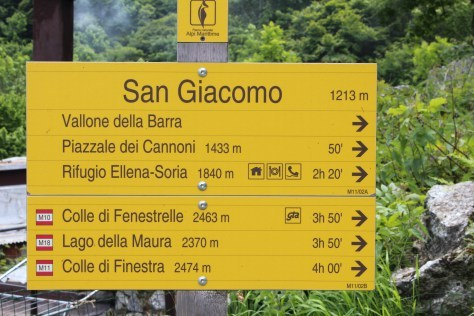
San Giacomo, one of the alpine hamlets where Jewish refugees from the Holocaust following the retreating Italian Army arrived.

A bucolic hikers path from San Giacomo to the Colle di Fenestra today, but what should have been a path to freedom for 1,000 Jews from St. Martin-Vésubie 72 years ago.
My research allowed me to put into context the acts of heroism of ordinary citizens like Giovanna Rizzolio‘s grandmother Beatrice Rizzolio (whose name is listed as one of the Righteous Among the Nations at Yad Vashem), Claudia and Silvia Cigliuti‘s grandparents Cornelia and Leone Cigliuti, Giacomo Oddero‘s mother Maria and many others. Wine families across the region were often caught between one or several partisan factions and the German army with their fascist allies.
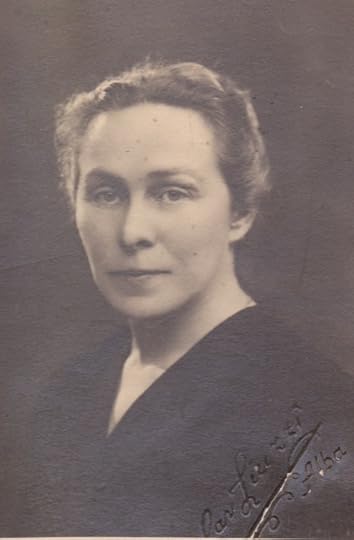
Beatrice Rizzolio, Righteous Among the Nations and nonna of Giovanna Rizzolio of Cascina delle Rose.
“Labor of Love”
There are many amazing stories I’ve uncovered, although many, no doubt, are lost to the ages. I look forward to sharing these stories and introducing my readers to a side of Piemonte, particularly the Langhe and Roero, they do not know in my upcoming book, “Labor of Love: The Wine Family Women of Piemonte.”
The post This day in history – September 8, 1943 appeared first on Wine Families of the World.
August 28, 2015
Mastering Differences Between California Cabernet Blend & Barolo
I live in Vail Valley, Colorado. It’s a very special gastronomic community filled with creative chefs and talented sommeliers. We are blessed to count Master Sommelier Sean Razee, Vail Resorts‘ Mountain Dining Beverage Director, among the oenological dwellers of our valley. That means whenever I am in need of oenological wisdom, Sean is my “go-to” professional. Needless to say, his tireless support of local charities in planning and executing their fundraising dinners is a delight to witness.
While writing a chapter in my book “A Labor of Love: Wine Women of Piemonte,” I got I stuck on a question regarding the differences between California Cabernet Blends and Barolo. My ability to explain the differences leads me, an attorney, to paraphrase Supreme Court Justice Potter Stewart’s famous line, “I know it when I see and taste it.” So who better to turn to than Sean for a more detailed explanation? No one in my universe is better at mastering differences between these two wines.
What I got was a 455 word education. And this is one education I definitely wanted to share. Sean graciously agreed to allow me to guest post his response to my question. I hope you enjoy the primer. I certainly did!
Suzanne:
“How would you describe the difference between a California Cabernet Blend and Barolo?”
Sean Razee:
Immense differences exist between California Cabernet Blend and Barolo. These differences are apparent in the color, flavor profile and structure of the wines. Some differences are due to climate differences between California’s Napa Valley and the northwest Italian region of Piemonte (specifically the Langhe). Differences in vinification also make the wines distinct from one another.
California Cabernet Blend
I would describe a California Cabernet Blend (in youth) as a deep ruby color with black fruits (currant, plum, cherry).
There should be a whiff of green herbs (tobacco, mint) with dark chocolate and coffee. The oak on the wine is prominent, displaying new French oak barrels (smoke, toast, vanilla, baking spices). Earthiness is not prominent.
The structure of the wine is medium-plus to high tannin (silky) medium to medium-plus acidity, with medium-plus to high alcohol.
Cabernet is a thick-skinned grape of high color pigmentation. The vinification methods used in production extract large amounts of tannin from the skins. A fruity and a silky, smooth palate dominates the wine. The tannin in a California Cabernet Blend tends to be “fully ripe” which gives the wine’s tannin a silky feeling on the palate.
Barolo
For Barolo (made from 100% Nebbiolo), the color is more garnet to light ruby with red fruits as opposed to black fruits (cherry, raspberry, pomegranate). The fruits are sometimes both ripe and dried (with some age). There can sometimes be notes of spice, anise, tar, leather, and balsamic. Notes of volatile acidity are common giving the wines a lifted, perfumey aroma. Some producers are using some new French barrels, adding the corresponding flavor profile of those barrels. However, the traditional production methods do not lend oak to the flavor profile.
Unlike a California Cabernet Blend, a Barolo might be bone dry, with high tannin, high acidity and medium-plus to high alcohol.
Nebbiolo is a thin-skinned grape with light color that contradicts the wine’s weight and aggressive tannin. It is highly aromatic and driven by non-fruit characters. Unlike the tannin in a California Cabernet Blend that possesses silkiness virtually upon release, the tannin in Barolo may need years to soften. This is historically why Barolo was required by law to age for many years before release. With today’s viticultural and vinification techniques though, this has changed a bit and Barolo is becoming much more approachable in its youth.
This last part of my Nebbiolo description (underlined) leads to why many people who like new world, California Cabernets do not like Barolo. For a person that wants a “smooth” wine, with high color, high extraction, high fruit content, high alcohol, silky tannins and some sweetness to the wine, Barolo is almost the antithesis of this model. Barolo is light colored, highly aromatic, is non-fruit driven, and has an aggressive tannin and acid profile.
– Sean Razee, Master Sommelier

Master Sommelier Sean Razee, Beverage Director, Vail Resorts Mountain Dining.
Photo credit: Vail Resorts
For more information on Sean Razee, please visit my profile of him, “Courting Sommelier Excellence.”
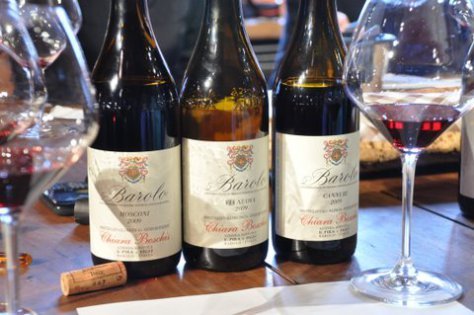
Barolo from famed producer Chiara Boschis of E. Pira e Figli. Photo Credit: Alisha Quinn Bosco
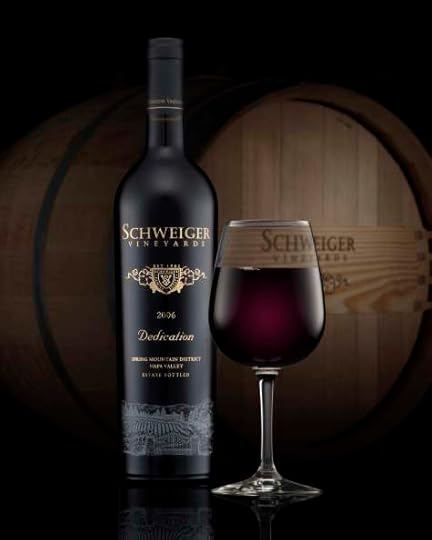
Schweiger Vineyards’ “Dedication,” an example of one of Napa Valley’s distinctive California Cabernet Blends. Photo credit: Schweiger Vineyards
The post Mastering Differences Between California Cabernet Blend & Barolo appeared first on Wine Families of the World.
August 14, 2015
Italian Wine Families’ Big Brother
Today, across wine regions of Europe, wine families are under the crushing weight of over-regulation. Big Brother is an unwanted participant in the wine industry, particularly in Italy.
Unlike large wineries that can afford the high cost of labor and hire dedicated administrative staff, small to medium size family-owned wineries struggle to tend to their vineyards, make wine and comply with the albatross of regulations from the European Union and Italy bureaucracy. Oh, did I mention trying also to raise a family and have a life?
A list of Italian wine industry regulatory bodies that can at a moment’s notice conduct snap inspections on the wineries include:
CCIAA Camera di Commercio (Chamber of commerce)
Provincia Ufficio Ispettorato Agrario (Provincial office of agricultural inspection)
Regione Assessorato Agricoltura (Regional department of agriculture)
Valoritalia – Ente Certificatore (DOC, DOCG, IGA, etc)
ASL (Unità Sanitaria Locale) (Local health department)
NAS (Nuclea anti-Sofisticazioni dei Carabinieri) (Anti-adulturation police)
ICQRF (Ufficio Repressione Frodi) (Fraud office)
Dognana (Customs)
Corpo Forestale dello Stato (State forestry department)
Guardia di Finanza (think IRS!)
Agenzia delle Entrate (Inland revenue – again, think IRS!)
It doesn’t matter if regulators arrive in the midst of time-critical work in the vineyards or cellars. Nothing takes priority over the controllers. Although like Mother Nature the government requires immediate attention, the latter can be quite unreasonable if its needs are not met.
Labor is extremely expensive in Italy. Family owned wineries and restaurants have been forced to reduce staff. Volunteer labor – once part of the cultural beauty of the Italian harvest – is strictly forbidden. If you happen to be in Piemonte during the harvest and see helicopters flying overhead, it’s not National Geographic taking photos, but the government’s labor controllers. They compare the work sheets of farmers with aerial photos. If the numbers in the latter are greater than the numbers reported, crushing fines are imposed on the farmers. The result? Wine family members must be able to attend to all demands of the winery both internally and externally. And I haven’t even mentioned the market demands they must tend to in order to sell their wines.
I have to wonder how an industry that has been around since before the Romans could survive without governmental regulations. But it did. With no sign of a halt to the expansion of European Union and Italian government regulations, let’s hope the industry – particularly the artisanal family wineries – can survive the suffocating weight of bureaucracy.
Note: For an interesting discussion on the history of wine regulation in Europe, read “On the History and Political Economy of Wine Regulations in Europe” by Giulia Meloni and Johan F.M. Swinnen
The post Italian Wine Families’ Big Brother appeared first on Wine Families of the World.
August 12, 2015
Courageous Women of Piemonte
I began my journey to write “A Labor of Love: Wine Family Women of Piemonte” when I discovered riveting stories about the courageous women of Piemonte. The first stories I heard were about Beatrice Rizzolio, grandmother of Giovanna Rizzolio of Cascina delle Rose. The courageous, brilliant woman is memorialized as a “savior” at Yad Vashem. Her designation as one of the Righteous Among the Nations came in 1975 in Rome for recognition of her courage in saving Jews during the Nazi occupation of Piemonte after the Italian armistice with the Allies on September 8, 1943.
Much is known about the courageous acts of women who fought as women partisans against the Nazis and fascisti. But what of the simple farmers who risked their lives and possessions to give aid and succor to the partisans? Little is known about them except for the stories families tell to each other and, occasionally, to an outsider like me.
One story of a courageous couple – Leone and Cornelia (Elia) Cigliuti – came to me through their granddaughter Claudia Cigliuti. The winemaking Cigliuti family has lived for centuries on the Bricco di Neive.

The Cigliuti family’s west-facing vineyards on the Bricco di Neive
The bucolic vineyard-carpeted hill was once a hotspot of Autonomi partisan activity during the Nazi occupation between September 1943 and the end of the war in May 1945.
Sympathetic to the partisans, many farming families provided the partisans with shelter and food. This placed them in grave danger. Retribution for adding partisans was swift and brutal. But the courageous Piemontesi defied the occupiers and women like Elia Cigliuti were important civilian soldiers through their resistance.
One could say Elia owed her life to chickens. One day when Elia was outside her house, she saw a group of men walking up the road next to the family’s home. Knowing Fascist soldiers were nearby and thinking the men were partisans, she waved her arms and began to shout, “Go away! Go away!” Sadly, they were not partisans.
The Fascists ran to her, threatening her life as they demanded to know who she was trying to warn. With guns aimed at her and her life in the balance, the quick-thinking Elia pointed to the chickens in the vineyard. “I was shooing away the chickens so they wouldn’t eat the grapes!” she insisted. It wasn’t an easy sell.
Eventually, Elia convinced the gun-wielding soldiers the chickens were to blame for her shouting and nothing more. Truth is, chickens are just fine in vineyards and are considered valuable “vineyard workers” since they aerate the soil, eat insects and leave behind nitrogen rich “fertilizer.” Thanks, however, to the Cigliutis’ chickens that were in the right place at the right time, and to a lack of viticultural knowledge amongst the menacing fascists, Elia lived.
Not doubt stories like this abound. Unfortunately, they will fade from history unless shared. Hopefully, more wine families of the Langhe and Roero where partisan activity was fierce will commit to paper the stories of their ancestors’ aid for the cause of liberty.

The bucolic Serraboella vineyard was the scene of fierce battles between partisans and fascists between 1943 – 1945.
Want to know more about Piemonte’s wine family women? Subscribe to my blog and stay up to date on the early summer 2016 release of my book “A Labor of Love: Wine Family Women of Piemonte” and follow me on Wine Families of the World on Facebook.
The post Courageous Women of Piemonte appeared first on Wine Families of the World.

